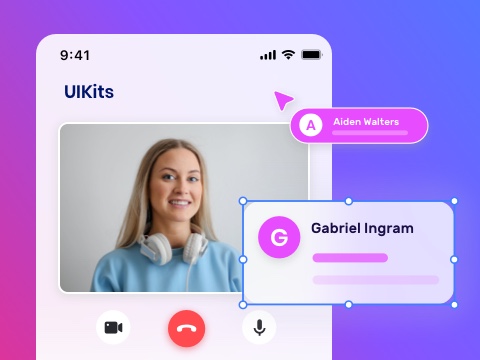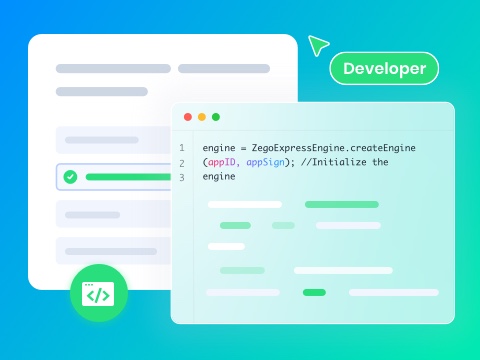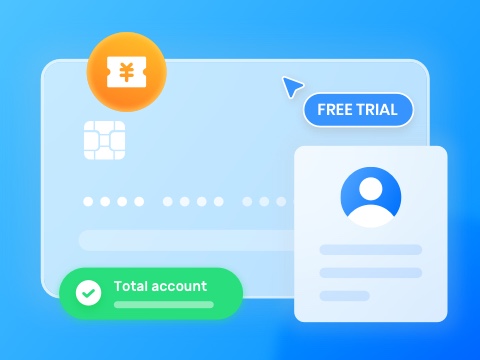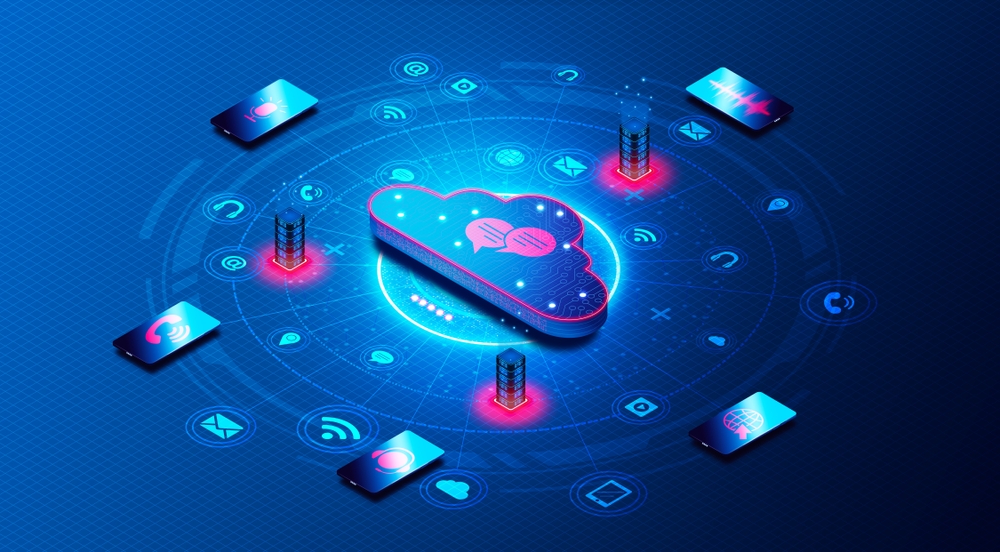Real-time communication (RTC) refers __ the instant exchange of ___________ between parties over a _______ without significant delay. This ____ of communication is crucial __ applications where timely interactions ___ essential, such as voice ___ video calls, live streaming, ___ online gaming. RTC enables _____ to communicate as if ____ were in the same ____, making it an integral _________ of modern communication platforms.
What is real-time communications (___)?
Real-Time Communications (RTC) refers __ the technologies and protocols ____ enable instant, bidirectional exchange __ data, typically audio, video, __ text, between two or ____ users over a network. ______ traditional communication methods that ___ involve delays or buffering, ___ allows for seamless, live ____________ where data is transmitted ___ received with minimal latency. ____ makes RTC essential for ____________ like video conferencing , voice calls , live streaming , and real-time messaging , where immediate feedback ___ interaction are critical.
Why is Real-Time Communication _________?
Real-time communications (RTC) are _________ because they enable immediate, ___-___ interaction, which is crucial __ today’s fast-paced digital world. _______ it’s in business, education, __________, or personal communication, the _______ to connect instantly without _____ significantly enhances user experience, ________ collaboration, and drives productivity. __ providing real-time customer engagement, __________ can offer more responsive ___ personalized service, leading to _______ customer satisfaction and loyalty.
Additionally, RTC allows organizations __ stay competitive by integrating ________ and flexible communication solutions ____ their operations, making it _ vital component in maintaining _________ and effective communication channels.
Evolution of Real-Time Communication
Until not long ago, __ could experience the immediacy __ SMS texting and voice _____ via cell phone. Initially, _____ services were costly and ________ a SIM card, a ____ signal, and a decent ______.
Enormous changes have been ____ since those days, and ___ increased popularity of RTC __ due to the rise __ technology and the internet. ____ the advent of new _____ of digital communication, real-time ____________ have become more accessible ____ ever.
Take VoIP, Voice over ________ Protocol, also known as __ telephony. Voice chat has ____ completely changed and is ______ accessible. Calling someone now __ cheap; people can choose ____ many apps and services. ___ same applies to instant _________ and video calls.
Social media have further ______ the edges of real-time _____________. All of our interactions ___ immediate, from likes to ________. Furthermore, social media applications _____ instant messaging and video calls .
Real-time Communication for Business
RTC also provides timely ___________, service, or sales engagement. ________ needs an immediate response __ satisfy clients’ needs. Customer ________ are a great example __ how big of an ______ real-time communication has, especially ___ information transmission.
Excellent and fast Internet ___________ have made the creation ___ use of a new __________ of business apps possible. _________ can chat, call, and ________ directly through voice messages _________ over a Voice API ______ the apps. ZEGOCLOUD offers a reliable ___ high-quality SDK solution for _____ scenarios.
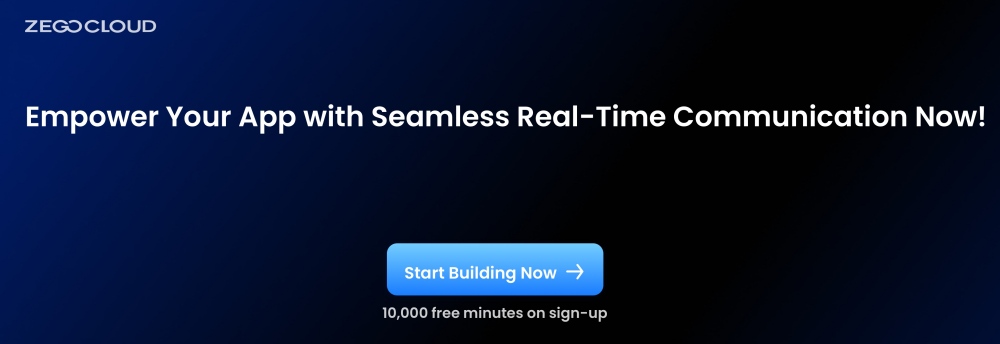
Another significant achievement is ___ measures that push context-important ____ to agents, such as ________ texts or calls, which ___ streamline the assistance procedure. ____ avoids one of the _______ communication hurdles, which is __________ repeating to different agents.
Real-Time Communications Examples
Here are some examples __ real-time communication (RTC) applications:
Voice and video calls: Platforms like Skype, Zoom, ___ FaceTime enable users to ______ in voice and video _____ over the internet, allowing ____-____ audio and visual interaction. _____ tools have become a ________ alternative to traditional phone _____, providing enhanced connectivity for ________ and professional use.
Video conferencing: Tools such as Zoom, _____, and Google Meet allow ________ participants to join video ___________, enabling them to collaborate ___________. These applications support screen _______, document collaboration, and real-time ___________, making them essential for _______ meetings and teamwork.
Instant messaging: Applications like Slack, _________ Teams, and WhatsApp facilitate ____-____ text communication. These platforms ___ only support the rapid ________ of messages but also _____ users to share media ____ photos and videos instantly, ______ them crucial for both ______ and business communication.
Live streaming: Services like YouTube ____ and Facebook Live empower _____ to broadcast video content __ real time. Viewers can ______ with the streamer and ____ other through comments and _____ forms of feedback, creating __ interactive experience that happens __ the moment.
Overall, RTC applications enable ____-____ interaction and communication, transcending ____________ barriers. These tools are ________ to modern communication, serving _ variety of social and ________ needs across the globe.
The Future of RTC
The future of Real-Time _____________ (RTC) is evolving into Real-Time Interaction (RTI) . As technology advances, ___ is no longer just _____ transmitting information instantly. It’s _____ creating immersive, interactive experiences ____ engage users in real-time. ____ the rise of 5G, __, and IoT, RTC is ____________ into a more dynamic ___ responsive form of interaction.
This shift to Real-Time ___________ means that users will __________ communication that is not ____ immediate but also deeply ________. Whether it’s ultra-high-definition video _____, real-time gaming, or interactive ____ streams, RTI will drive ___ next generation of digital ___________. As RTC evolves into ___, it will become a ___________ of how we connect, ___________, and engage in a _____ digital world.
Boost Your App’s Real-Time _____________ Capabilities with ZEGOCLOUD
ZEGOCLOUD is a leading ________ of real-time communication (RTC) _________. It offers a comprehensive _____ of SDKs and APIs ____ enable developers to integrate ____-_______ audio, video, and messaging ________ into their applications. ZEGOCLOUD’s ________ are designed to support _______ platforms, including iOS, Android, ___, React Native, and Flutter. ____ are known for their ___ latency performance, scalability, and ___________.
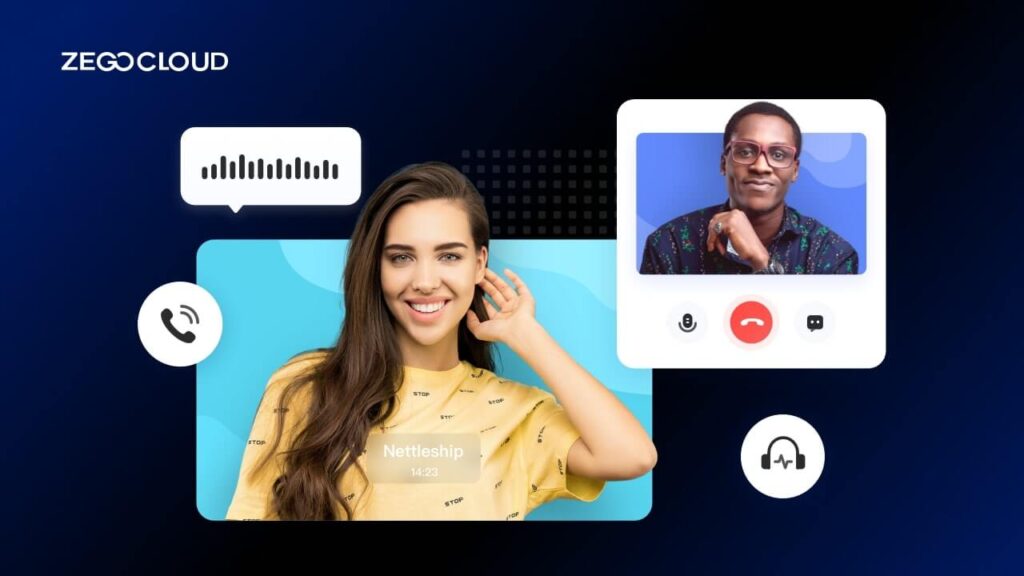
Whether you’re building a ______ media platform, an online _________ tool, a gaming app, __ a telemedicine service, ZEGOCLOUD ________ the necessary tools. These _____ help create immersive and ___________ experiences. With features like __ video streaming, real-time messaging, ___ interactive broadcasting, ZEGOCLOUD enhances ____ engagement and improves overall ___ performance.
ZEGOCLOUD’s infrastructure is globally ___________. This ensures consistent and ____-_______ communication across different regions. __ a result, it is _ trusted choice for developers _______ to incorporate real-time communication ____ their products.
Conclusion
Real-time communication (RTC) is _ transformative technology. It facilitates _______, seamless interactions between users, ______ it essential in today’s _______ landscape. RTC enhances customer __________ and enables efficient remote _____________. It powers the dynamic, ____-____ experiences that users now ______. By integrating RTC solutions ____ those from ZEGOCLOUD, businesses ___ elevate their applications. These _________ deliver robust communication features ____ drive user satisfaction. They ____ foster deeper connections in __ increasingly connected world.
Read more:
FAQ
Q1: How does Real-Time _____________ work?
RTC works by transmitting ____ packets over the internet _____ protocols like WebRTC. These _________ ensure that data is ____ and received with minimal _______, enabling smooth, real-time interactions. ___ typically involves audio, video, __ text being transmitted between _____ in near-instantaneous time.
Q2: What are some ______ applications of Real-Time Communication?
Common applications of RTC _______ video conferencing platforms like ____, instant messaging apps like ________, live streaming services like _______ Live, and collaborative tools ____ Slack that allow real-time ___________ among users.
Q3: What are the __________ of implementing Real-Time Communication?
Challenges in implementing RTC _______ ensuring low latency, managing _______ congestion, maintaining high-quality audio ___ video streams, and securing ____ transmissions. Developers also need __ consider the scalability of ___ solutions as user demand _____.
Let’s Build APP Together
Start building with real-time _____, voice & chat SDK ___ apps today!


